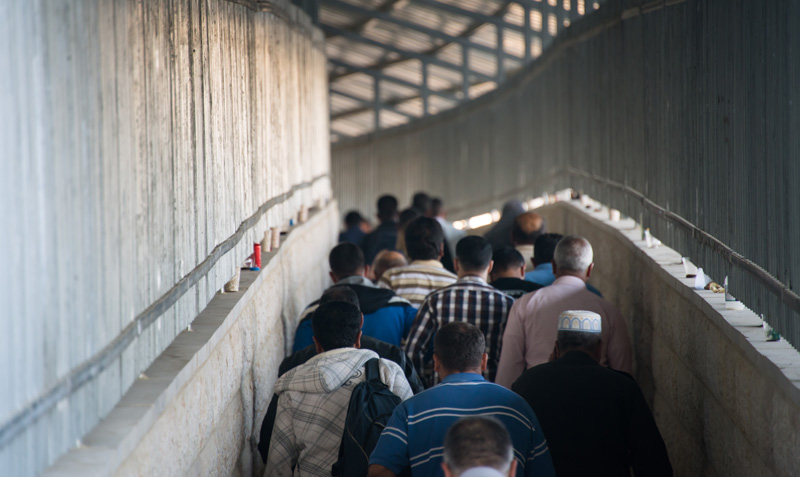The 2010s have been a decade of intense turmoil for the world with no clear resolution in sight. For the moment, the right has been the most immediate beneficiary of this disorder, with nationalist authoritarians like Donald Trump, Narendra Modi, Jair Bolsonaro, and now Boris Johnson taking the global stage by storm.
But given its prostration in the years following the fall of the Soviet Union, the resurgence of the global left — together with progressive social movements — has also been remarkable. This has been a decade of austerity and deepened repression, but it has also been the decade of the Arab Spring, Occupy, Syriza, Podemos, Jeremy Corbyn, Bernie Sanders, Black Lives Matter, #MeToo, the Climate Strike, and now the uprisings in Haiti, Hong Kong, and throughout the Middle East.
At first glance, Israel appears immune to this turmoil. Emerging scot-free from the 2008 global financial crisis, which precipitated many of the decade’s developments, the country has enjoyed high growth and low unemployment over the last ten years. Israel’s exceptional political stability is closely linked to this economic buoyancy. Following three decades of swift alternation between Labor, Likud, and Labor-Likud governments, the period since 2009 has been the surprisingly serene “Age of Netanyahu,” now the longest-serving prime minister in Israeli history.
Whereas economic chaos elsewhere has resulted in the collapse of the political center and the resurgence of both the right and the left, in Israel the stability of right-wing rule has caused the center to cleave rightward, the far right to prosper, and the center-left to collapse.

Benny Gantz’s Blue and White party, the latest in a long chain of centrist parties, is almost indistinguishable from Likud with the exception of its personal rejection of Netanyahu. Middle-class voters have flocked to it, abandoning the Zionist left’s Labor and Meretz, who over the last few cycles have been reduced to threatening voters with their own disappearance, in a tactic that has been widely derided as a “gevald!” campaign (from the Yiddish for “help!”).
The endemic separation of “socio-economic” and “national-security” dimensions in Israeli politics hinders our ability to understand Netanyahu’s ascendancy and to take stock of where the Israeli left is today. One of the only analysts of Israeli society to understand this, Yoav Peled, has argued that Ariel Sharon ascended to power by promising to compensate big business for the loss of the Arab markets it had hoped to enter during the Oslo era; he did so by privatizing lucrative publicly-owned companies, like the telecom giant Bezeq, into their hands at bargain prices.
But the spoils of privatization can only be distributed once. Realizing this, Netanyahu deepened and stabilized Sharon’s cross-class coalition by turning the occupation into a lasting motor for Israel’s economy. Israel’s avoidance of the financial crisis, and its subsequent relative prosperity, can be attributed to its version of “war Keynesianism,” which keeps military budgets high and Israel’s arms-technology-surveillance complex awash with skilled, battle-tested manpower fresh out of the IDF. Meanwhile, the ruling class’s most popular mechanisms for coping with rising global inequality — violence and surveillance — keep the demand for its products sky-high.
The profits of “living by the sword,” Netanyahu-style, are unevenly distributed. Following the massive but very short-lived “social protest” movement of 2011, Netanyahu and outgoing Finance Minister Moshe Kahlon made a few moves toward alleviating inequality. Yet by and large both Palestinian citizens of Israel and ultra-Orthodox Jews remain poor and left out of the “new economy”. Meanwhile, the veteran secular Ashkenazi-Jewish middle class, as well as a rising new Mizrahi-Jewish middle class, have done well for themselves.
The people whom the Israeli polity is explicitly defined against, the Palestinians living in the occupied territories, have been almost entirely locked out of the Israeli economy, with their cheap labor power replaced by that of migrants from the Third World.
Worse, they have become subjects of what Achille Mbembe calls “necropolitics” – politics that functions through the threat of death, maiming, or incarceration. Whether under the puppet rule of the Palestinian Authority and the boot of the Shin Bet in the West Bank, or under siege and intermittent bombardment in the Gaza Strip, the stability of the hegemony perfected by Netanyahu is ultimately predicated on the prolonged low ebb of Palestinian resistance and the continued indifference to their plight in the international community, including in the Arab world.
This insistence on the stability of Netanyahu’s strategy of control may appear out of sync with current events, as Israel enters an unprecedented third round of elections within one year under the shadow of the prime minister’s multiple indictments for corruption.

But while Netanyahu himself may be heading out, the opposition led by Blue and White’s Gantz has no aspiration to tinker with this strategy. The pundit logic which divides the electoral map almost evenly into a “right-religious” and “center-left” bloc misrepresents the real balance of power: Gantz is far more likely to enter a coalition with a post-Netanyahu Likud and/or other right-wing parties than he is to join forces with the predominantly Palestinian Joint List.
Still, Israel is not an island, and its apparent stability is built on shifting sands. Its real estate market suffers from apparent over-valuation, and if this bubble pops following a renewed dip into global recession, the complacency of the home-owning middle class might curdle into panic and resentment.
An ending of the civil wars in Syria and Yemen, the renewal of mass protests in Algeria, Iraq, and Lebanon, and the prospect of the Palestinian Authority’s implosion, are all factors that could contribute to a possible renewal of Palestinian resistance and Arab solidarity. Moreover, the polarization of support for Israel along party lines in the U.S. means that a future Democratic administration (especially one headed by a leftist such as Bernie Sanders) may be less tolerant of Israeli expansionism more than any since that of George H.W. Bush.
On the Israeli scene, the political formation most likely to be able to capitalize on any such shift is the only group which holds a coherent leftist position on both socio-economic and national-security issues. This is the Joint List, composed of majority-Palestinian parties, whose constituents have the most urgent interest in economic redistribution, civic equality, and an end to the occupation. With the collapse of the Zionist left, Jewish leftists in Israel and their allies abroad have begun to treat the Joint List’s leader, Ayman Odeh, with the respect owed to the leader of Israel’s consistent opposition.
Over the last few election cycles, Meretz and Labor’s last-ditch “gevald!” tactics have prevented this new respect from translating into a massive movement of Jewish votes to the Joint List. Nevertheless, support for a minority leadership of the progressive constituency – an “Obama effect” which would be much more radical in the Israeli context than it has been in the U.S. – is the most significant horizon for the left in Israel.


